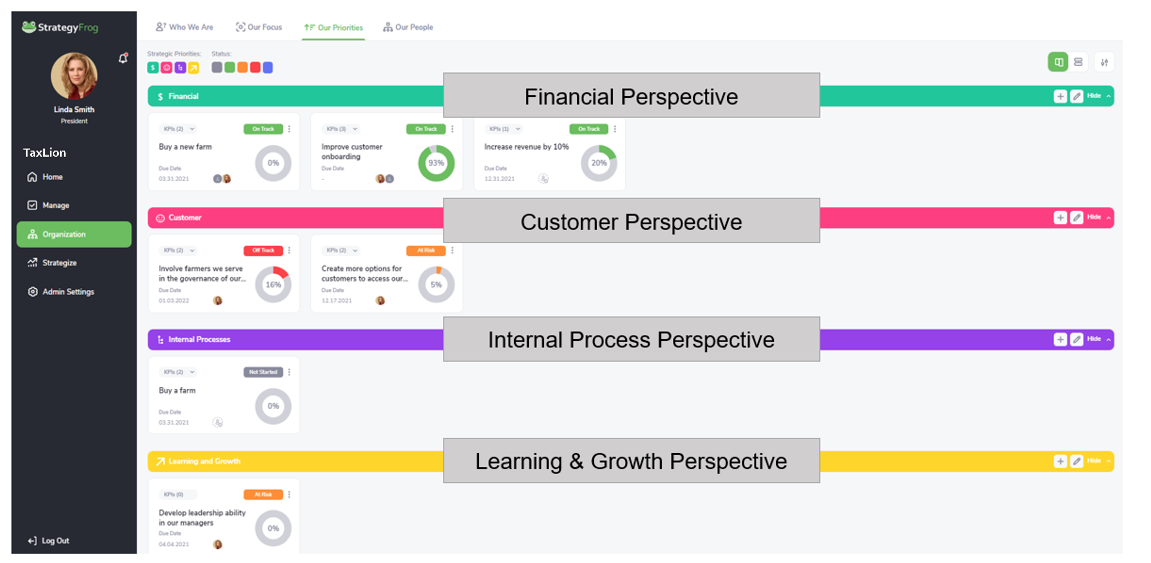Successful organizations narrow their priorities and use strategic measures to track progress toward strategic objectives. These organizations do the following:
- Align the day-to-day work that everyone is doing with the vision and strategy of the organization,
- Communicate what they are trying to accomplish,
- Use consistent nomenclature to describe their strategy, so everyone understands,
- Prioritize projects, products, and services, and
- Measure and monitor progress toward strategic targets.
As mentioned in the Strategic Priorities section in Understanding StrategyFrog’s Core Concepts, the Balanced Scorecard suggests that an organization should be viewed from at least four perspectives (Financial, Customer, Internal Process, and Learning & Growth), develop metrics, collect data, and analyze it relative to these perspectives.

- Financial Perspective. Timely and accurate financial data is always a top organizational priority. This perspective includes any critical objective related to an organization’s financial health and performance. Revenue and profit are obvious objectives that most organizations list in this perspective. Other financial goals might include cost savings and efficiencies, profit margins, and revenue sources.
- Customer Perspective. Focusing on customers and their satisfaction is critical for every organization. If customers are unsatisfied, they will eventually find other suppliers to meet their needs. In developing metrics for satisfaction, customers should be analyzed according to the kinds of customers and the processes used to provide a product or service to those customer groups. Typical objectives include customer service and satisfaction (e.g., increasing net promoter scores), market share (e.g., growing market share in a segment or country), and brand awareness (e.g., increasing interactions on social media).
- Internal Process Perspective. Metrics based on this perspective allow managers to know how well their organization is running and whether its products and services meet customer requirements (or achieve the mission). Examples of internal process objectives include process improvements (e.g., streamlining an internal approval process), quality optimization (e.g., reducing manufacturing waste), and capacity utilization (e.g., using technology to boost efficiency).
- Learning & Growth Perspective. This perspective focuses on both individual and organizational improvement. In a knowledge-worker organization, people — the only repository of knowledge — are the primary resource. Metrics can be implemented to encourage managers to focus on training and learning for the workforce. Examples of these objectives include human capital – skills, talent, and knowledge (e.g., skills assessments, performance management scores, training effectiveness), information capital – databases, information systems, networks, and technology infrastructure (e.g., safety systems, data protection systems, infrastructure investments), and organizational capital – culture, leadership, employee alignment, teamwork and knowledge management (e.g., staff engagement, employee net promoter score, corporate culture audits).



